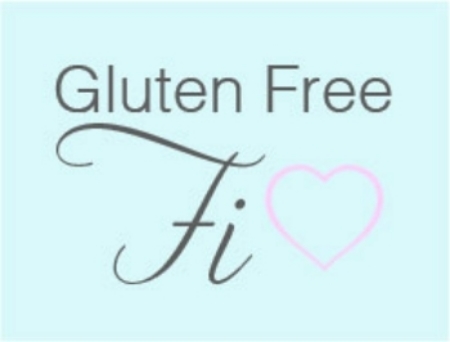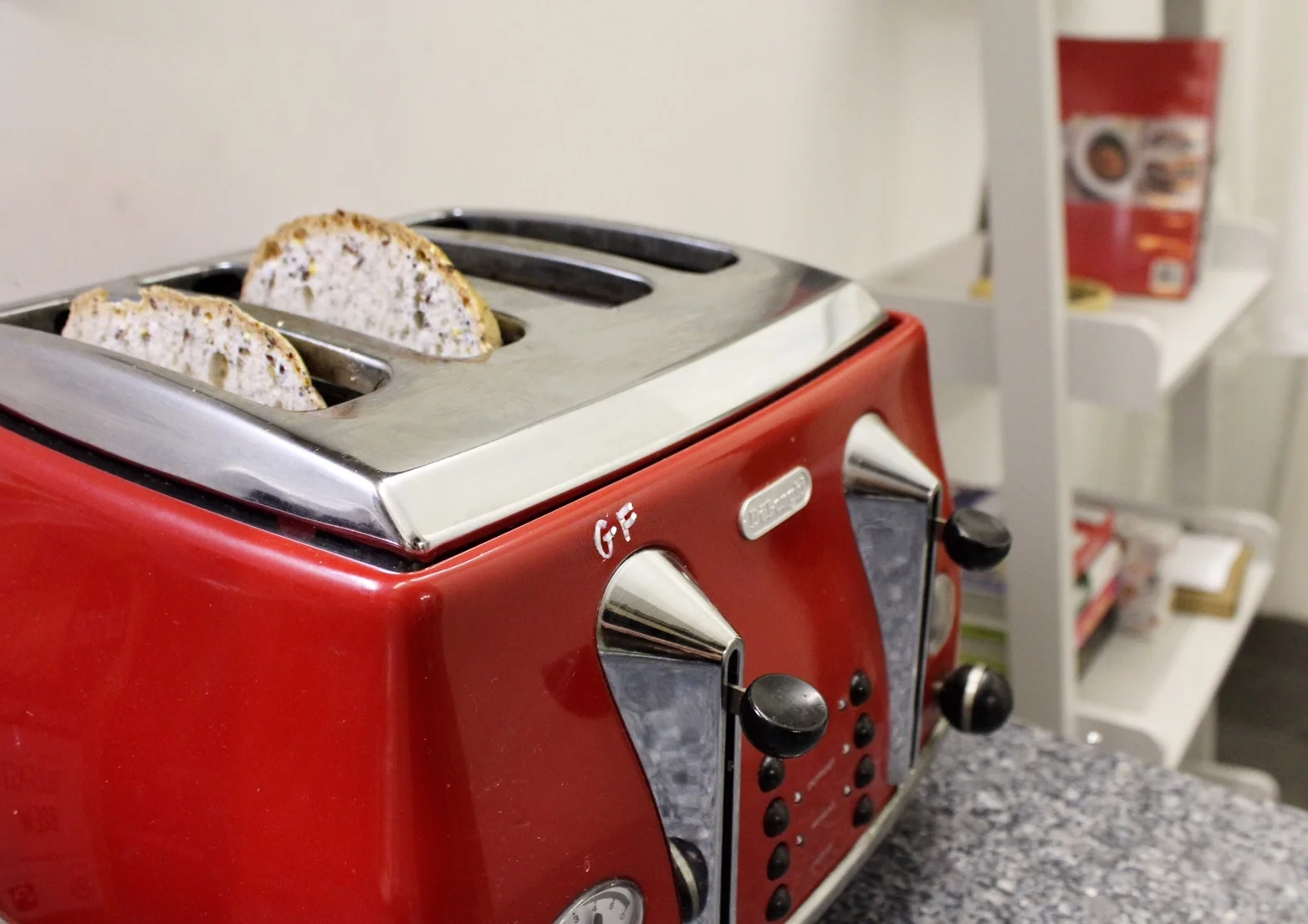When you or someone you are close to is diagnosed with Coeliac disease or with a gluten intolerance, it can come as a shock. A change in diet is not the only challenge; you will also most likely be living and sharing a kitchen with others who eat gluten. This means that you potentially put yourself at risk every day of coming into contact with gluten containing products…and dare I say it…their dreaded crumbs! It also means that you will have to keep a close eye on everything in the kitchen so you don’t mistakenly eat something containing gluten or use something that could be cross contaminated with gluten.
What people need to understand is that the amount of gluten that can make you sick is microscopic! It also clings to different items in the kitchen, even after cleaning them, which is why you have to be so cautious.
It is possible to share a kitchen when you are gluten free, as long as you and the people you are sharing with follow some strict rules to keep you safe. I share a kitchen with my gluten-eating husband and we follow strict rules to make sure that I don’t get glutened. Here are some tips for keeping your shared kitchen gluten free friendly:
Replace Your Toaster
First and foremost, it’s time to say goodbye to your old toaster! The last thing you want to do is risk years worth of gluten-build up in your toaster making its way onto your gluten free bread. In our house, we bought a new 4 slice toaster and have a rule that the left hand side of the toaster is for gluten free bread and the right hand side of the toaster is for normal bread. If someone in your house is a bit forgetful, you can add a label to the toaster – “GLUTEN FREE BREAD ONLY” – to remind them which side of the toaster is off limits. I clean our toaster every couple of days with Dettol to make sure there are no unwanted crumbs clinging to the top of the toaster!
I have a little "GF" written in chalk pen on my side of the toaster!
Cutting and Chopping Boards
Used cutting boards and chopping boards (especially wooden boards) by nature tend to have lots and lots of tiny scratches in them. These little scratches can harbour microscopic pieces of gluten and can make the boards a threat for cross contamination.
The best way to deal with this is to buy all new boards and keep them only for gluten free use. You can even buy colour coded boards so that everyone knows which aren’t to be used.
Keep Gluten Items in One Corner of the Kitchen
In order to share a gluten free kitchen successfully, it needs to be thought of as just that – ‘a gluten free kitchen’. This means that you are not segregating all of the gluten free products into ‘one shelf in the fridge’ or ‘the gluten free cupboard’, but instead you segregate all of the gluten-containing products and cooking tools. To put it simply, in your shared kitchen picture all of the gluten-containing foods, utensils and cooking tools in one corner. These items should only occupy that corner and stay in that corner. That means the rest of your kitchen will remain as a crumb-free, gluten-free friendly environment. You can then actively avoid that corner of the kitchen, or occasionally, go on a Dettol cleaning spree to get rid of any unwanted crumbs!
It is best to pick a corner for the gluten-containing foods that is away from most of the other counter-space and oven. This will obviously be difficult if you have a small kitchen, but just choose an area that you can consider as off-limits. It should obviously have cupboard space for gluten foods and utensils and a bit of a worktop area for food prep.
You then need to make sure that everyone in your house is made aware of the ‘gluten-containing’ corner and how they should stick to this space. You should also request that they only use gluten-free flours, as normal gluten flours can be airborne and could result in cross contamination.
Keep all gluten items well separated from gluten free areas
Sharing a Fridge
Ok, so in an ideal world we would have two fridges – a gluten fridge and a gluten-free fridge, but in reality, we don’t live in MTV cribs and will have to cram all the food in one fridge together.
To make this work, you should have the top shelf as gluten free. On this shelf, you will have your own butter (never share butter – you don’t want to end up with gluten crumbs on your gluten free toast) and gluten-free condiments. If there’s more than one other person in your house, you could label the condiments as gluten-free so that there’s no risk of them using it and cross-contaminating it with gluten.
Share your diet
The easiest way to share a gluten free kitchen? Make sure everyone in it follows a gluten free diet! This is what we do in our house. The only gluten-containing products Andy keeps in our kitchen is occasionally bread (kept in the bottom drawer of the fridge away from all other products) and sometimes a Pot Noodle…I think he does this to ruin my reputation as a gluten free food blogger. He can eat whatever food he wants when he is out of the house, but he understands the risks involved in bringing gluten into the kitchen. All the food we buy and cook is gluten free – including pastas and grains. All stock cubes, condiments and sauces are gluten free, which means that when I am going to cook, I don’t need to check ingredients labels before I cook! No risk of cross contamination or glutening myself by eating the wrong product!
I hope this helps if you are sharing a kitchen!
Fi x








